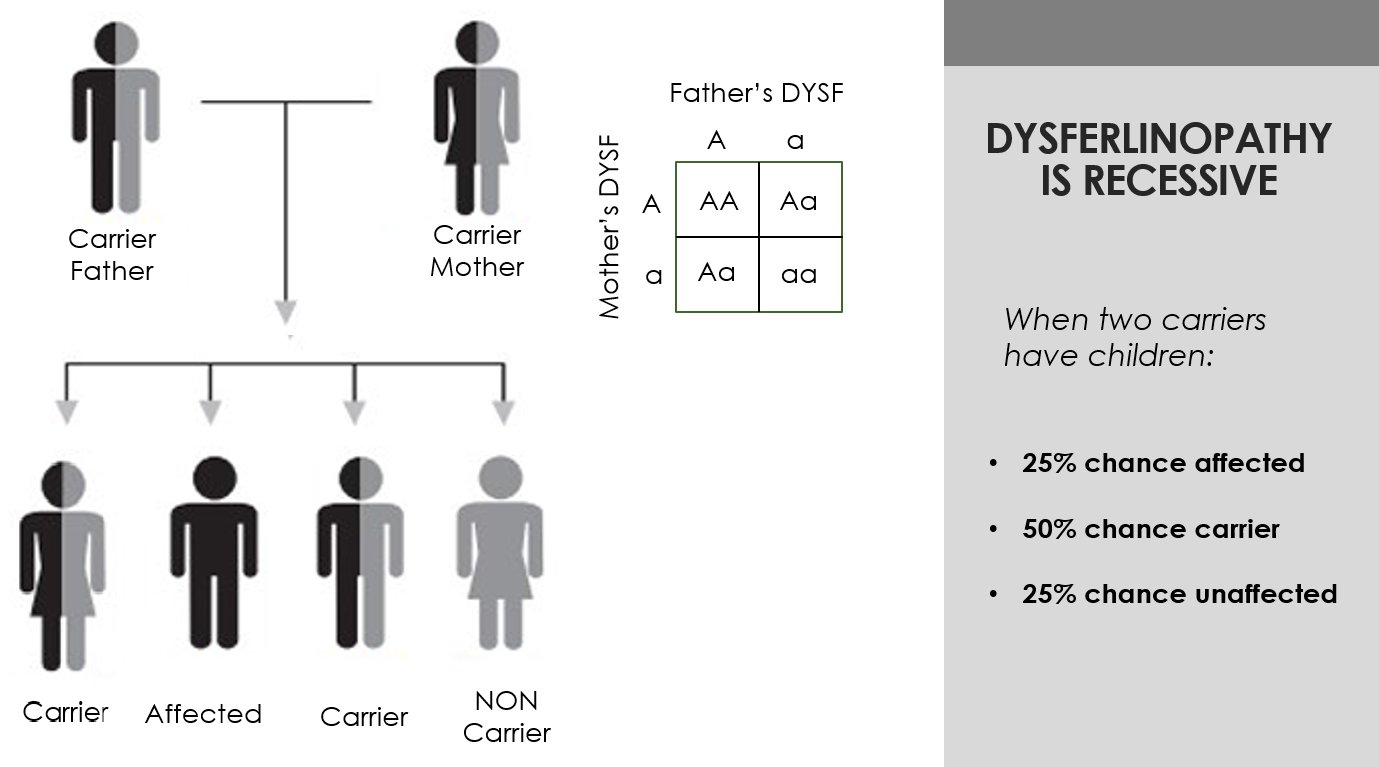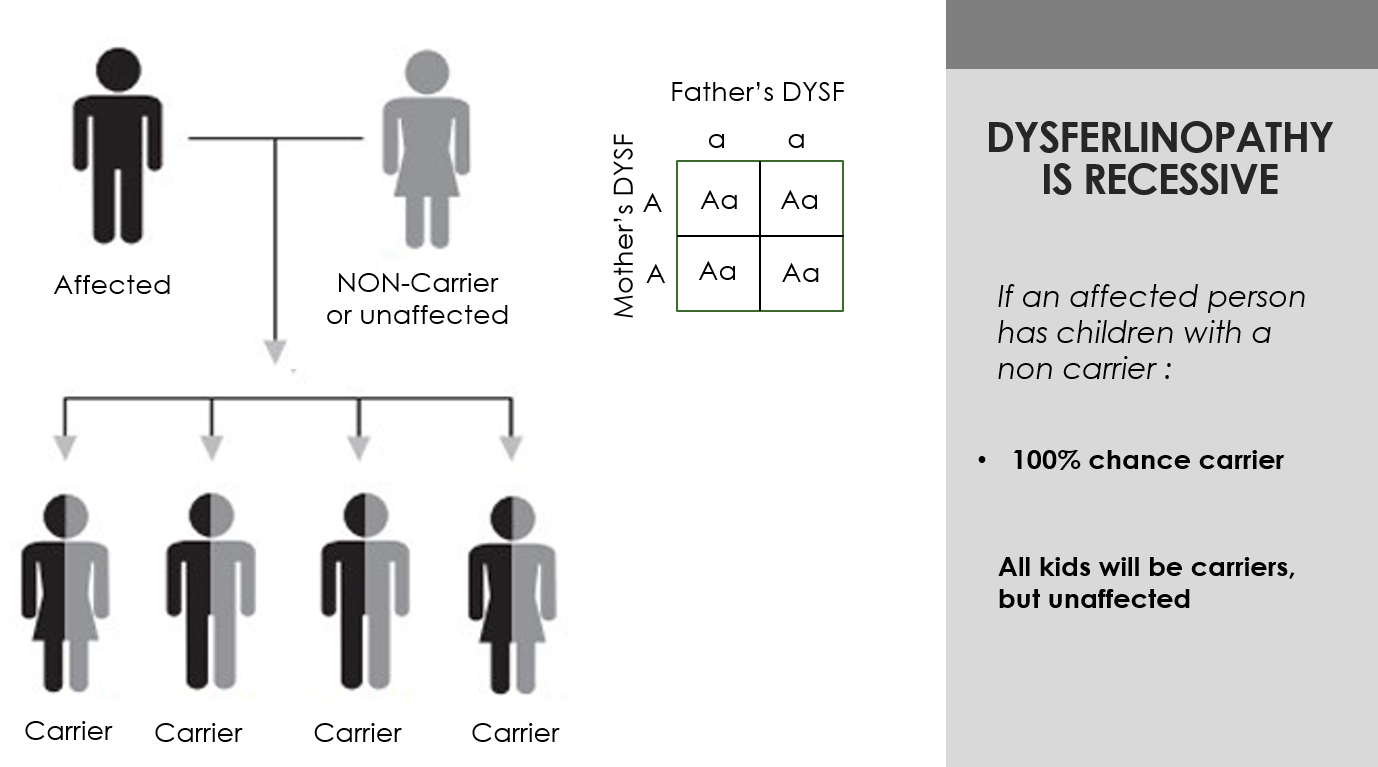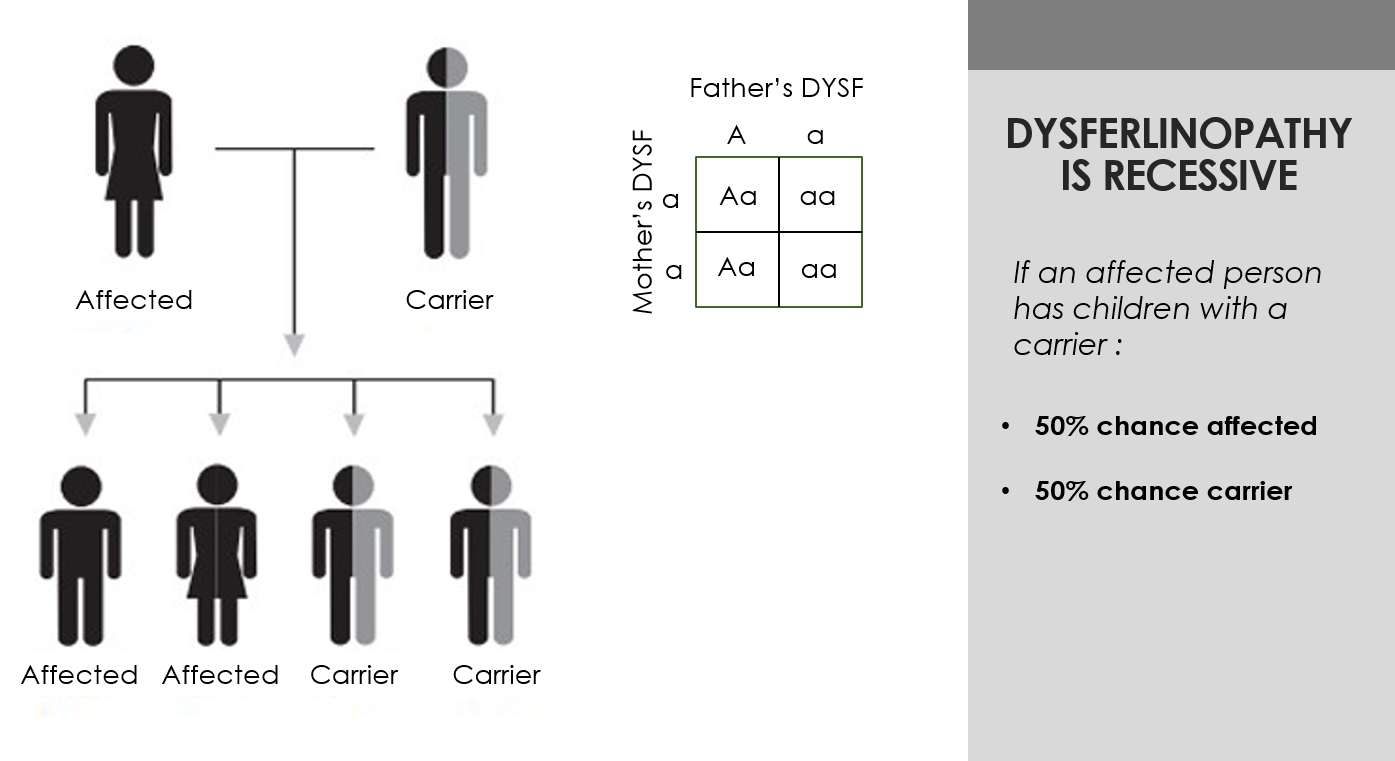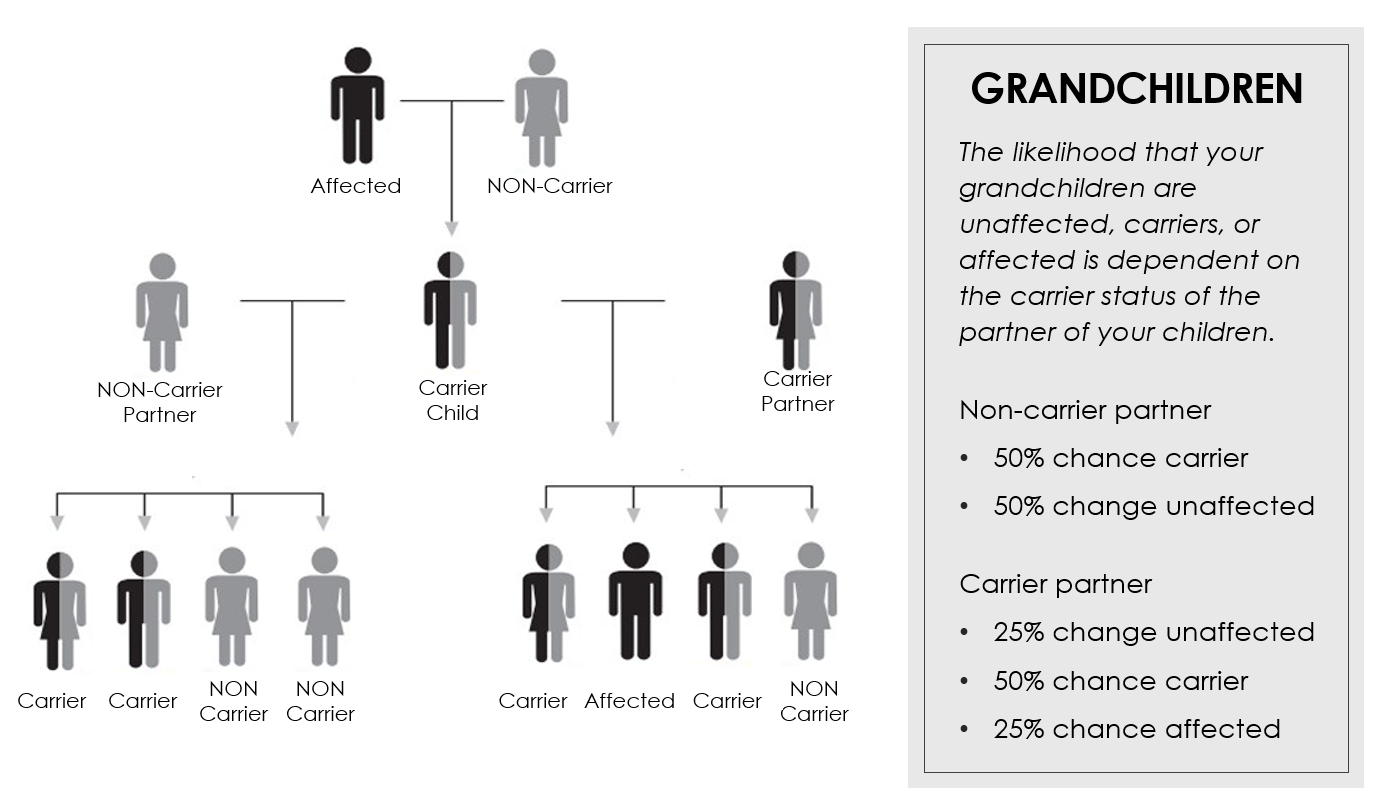UNDERSTANDING DYSFERLINOPATHY
Cause/Inheritance
UNDERSTANDING DYSFERLINOPATHY
Cause/Inheritance
Home ❯ Patients/Clinicians ❯ Understanding Dysferlinopathy ❯ Cause/Inheritance
Cause/Inheritance
What causes dysferlinopathy (also referred to as LGMD2B, LGMDR2 or Miyoshi Myopathy 1)? What are the patterns of inheritance? Click on the questions below for these answers and much more.
Dysferlinopathy is caused by inherited genetic mutations in the gene for dysferlin. It is a recessive condition, so patients with this disease must have two non-functional copies of the DYSF gene. There are many different mutations that disrupt the function of the dysferlin protein, and each patient usually has different mutations in each of their two copies of the DYSF gene. People with only one non-functional DYSF gene (called carriers) do not have symptoms, because having one working copy of the DYSF gene is enough to prevent the disease.
An individual may have genetic mutations in the DYSF gene for the following reasons:
- Inheritance of a non-functional gene from each parent (autosomal recessive inheritance)
- Sporadic mutations – mutations which aren’t inherited from a parent, but that arise directly in the egg or sperm
There are 3 general possibilities that will result in children who may inherit the disease (affected) or who may inherit a single disease gene (carrier):
Both parents are carriers. This means that each parent has one working gene and one non-working or mutated gene. When two carriers have children there is a 25% chance the children will be unaffected (receive 2 working genes), a 50% chance they will be carriers (receive 1 working and 1 mutated gene) and a 25% chance they will be affected (receive 2 mutated genes and inherit the disease).

One parent is affected and one parent is unaffected. This means that the affected parent has 2 mutated genes and the unaffected parent has 2 working genes. In this case all the children will be carriers.

One parent is affected and one parent is a carrier. This means that the affected parent has 2 mutated genes and the carrier parent has one working gene and one mutated gene. In this case there is a 50% chance the children will be carriers and a 50% chance they will be affected.

Genetic testing in families with recessive disorders is sometimes advisable in order to detect carriers. It might also be good to determine whether the potential spouses of carriers or affected individuals are also carriers. Determination of a person’s carrier status requires testing his/her DNA (rather than antibody testing for the dysferlin protein), since a carrier still expresses dysferlin protein from their one working copy of the DYSF gene.
The likelihood that your grandchildren are unaffected, carriers, or affected is dependent on the carrier status of the partner of your children. Your children may want to get genetic testing and have their partners get genetic testing to verify whether they are unaffected, carriers or affected. Please see the table below for details.

A single non-functional DYSF gene cannot cause dysferlinopathy. For the disease to occur, both copies of the DYSF gene must be non-functional. Dysferlinopathy is autosomal. This means that it is not a sex-linked gene, and both males and females are affected with the same frequency. One copy of the gene is inherited from each parent. If one functional copy and one non-functional copy are inherited, the single good copy is sufficient for healthy muscle function and the individual is an asymptomatic “carrier” of the disease. If both parents are carriers, each child has a one in four (25%) chance of inheriting two non-functional copies of DYSF and developing dysferlinopathy.
